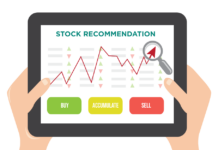
“A Black Swan is an event with the following three attributes. First, it is an outlier, as it lies outside the realm of regular expectations, because nothing in the past can convincingly point to its possibility. Second, it carries an extreme ‘impact’. Third, in spite of its outlier status, human nature makes us concoct explanations for its occurrence after the fact, making it explainable and predictable.” – Nassim Nicholas Taleb
Covid-19 is a classic Black Swan. In terms of the economic impact, it has been worse than the Global Financial Crisis of 2008 and the Great Recession that followed. In terms of uncertainty that it has unleashed, it has, perhaps, no parallels in modern times. This is evident from the total confusion that has gripped even the great gurus of the market. Legends like Warren Buffet, Howard Marks, and Ray Daleo who responded to previous crisis like the Global Financial Crisis with clarity and conviction were gripped by helplessness, which constrained successful investment actions. Nobody had a clue about the market impact. The sharp and vicious crash of end-March and the ferocity of the rebound that followed were out of the blue.
Liquidity and expectations
The market at any given point in time is the product of many factors: Economic fundamentals like GDP growth, corporate earnings, interest rates, policy initiatives, liquidity, and expectations are paramount. The short-run movements will be influenced by technical factors. Among fundamental factors, the weightage and power of factors will vary depending on the time and context. Presently, there are two dominant factors driving the market. One, the unprecedented humungous liquidity created by the leading central banks and two, expectations that there will be a growth and earnings rebound in 2021. Liquidity is a fact; the expectation is hope. We don’t know how the expectations would transpire.
The liquidity gush
The liquidity being created now would dwarf the QE created following the Global Financial Crisis. The Fed’s balance sheet is expected to explode from $4.3 trillion in April 2020 to $10 trillion by the end of the year and ECB’s balance sheet is likely to spike to EUR 6 trillion by the year-end. Central banks have the power to create money and flood the financial system with liquidity. But they are powerless in deciding where this money will go. The market would take that decision. A significant trend in the last ten years is that excessive money supply is not causing consumer price inflation. Instead, it is causing asset price inflation. Money flowing into financial assets like bonds and stocks has pushed up their prices. This explains the paradox of rising stock market in a crashing economy’. Already, hot money is flowing into emerging markets via ETFs. Thanks to the abysmally low-interest rates in developed countries, carry trade is picking up. In India, after the massive capital outflow of Rs 65000 in March, capital inflows have been robust since May. India received FPI inflows of Rs 23000 crores from May till 19th June. Top-quality large-cap names have been the major beneficiaries of this liquidity-driven rally.
Valuations are in risky territory
Globally stock valuations have shot up following the rally. Nasdaq is at an all-time high. Dow and S&P have rebound around 35 percent from March lows. Most other markets have followed suit. In India, Nifty is up 35 percent from March lows. This sharp pullback has pushed up valuations. S &P 500 is now trading at trailing valuation of 24 times. Nifty is trading at a trailing PE of around 22 assuming trailing Nifty EPS of 450.
Going by historical valuation parameters, these are not fair valuations. Such valuations can be justified under normal times particularly when expectations about GDP growth and earnings growth are optimistic. But in the context of the present reality of severe recession and poor corporate earnings, these valuations are hard to justify. Clearly, there is an economy-market disconnect.
This disconnect can be rationalized with the argument that economies and earnings will rebound sharply in 2021. There are many experts who believe that this will be a short recession. The logic of the argument is that this is not a recession caused by any financial or economic impairment; instead, it is a recession caused by the Great Lockdown. Therefore, as lockdowns are getting lifted like now, economies and earnings will bounce back. There is logic in this argument, but we are not certain about this outcome.
Build a focused portfolio
Time is ripe for a focused portfolio. Quality large-caps should be the essential ingredients of a focused portfolio. Leaders in telecom, top-quality stocks in private sector banking, quality names in FMCG, and promising stocks in pharma and chemicals should be the essential ingredients of a portfolio in these uncertain times. Investment in good mid-small-caps can be done through mutual funds.
Safe quality stocks are already fairly valued, perhaps a bit over-valued. Therefore, investors should be cautious while buying these stocks. Buying on declines would be the ideal strategy. Beaten down stocks in problematic sectors are likely to stage a sharp comeback if the scenario improves markedly. So, watch out for this space.
The opportunity and risk
It is possible that infections may peak around September/October and then start coming down. If that happens and lockdowns are completely lifted, globally, economies and corporate profits will bounce back. That, along with the humungous global liquidity, may sustain this bull run and take it forward. On the other hand, if there is a second wave of attack, there can be a severe setback. Only time can tell.









A well researched article on the present situation, presented in a lucid fashion. A must read by Geojit family.
Congratulations.
Thank you
Thank you